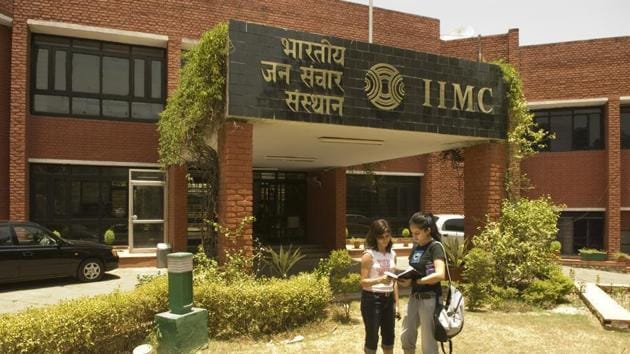Protest over fee hike spreads from JNU to IIMC
The students burnt the fee notification circular for the second semester. The administration met with the students on Tuesday and assured them of looking into their students’ demands.
Taking inspiration from the ongoing protests at Jawaharlal Nehru University, dozens of students at Indian Institute of Mass Communication (IIMC) on Tuesday protested against the present fee-structure of the institution and threatened to not pay the fee for second semester if their demands were not met.

Hrishikesh Sharma, a student of Radio and Television journalism which has the highest fee structure, said “We are demanding affordable fee-structure and availability of hostels for everyone. As of now, only 42 students can avail hostel facilities in the boys’ hostel and the rest have to stay out of campus which is expensive.”
When questioned on why the students were protesting now, Hrishikesh said, “We joined the institute as nobodys. Since we are here now, we can protest and demand a concession in the fee. You can say we have been influenced by what is happening in JNU and there is nothing wrong with that. We’re raising our voices for our rights,” he added.
Students burned the fee notification circular for the second semester which states which states that students of Radio and TV journalism have to pay Rs 80,000 of the total fee of Rs 1,68,500. The fee for Radio and TV was Rs 1,45,000 last year and Rs. 1,32,000 before that. There have been similar fee hikes for other streams as well.
The administration met with the students on Tuesday and assured them of looking into their students’ demands. A senior official of the institute said, “Administration has not turned a blind eye to their demands. DG has met students twice and assured that their demands will be looked at. We have also set up a Committee of Course Directors to look into the genuine demands.
Besides, we have skill-oriented PG diploma courses which are akin to ‘self-finance courses’ offered under the collegiate system, where the course fee is normally much higher than the regular courses.”
“When it comes to spending such a huge amount of money on education between a girl and a boy, an economically weaker household will always prefer spending it on a boy. If the fee is reduced, even girls from poorer households can study here”, said Aakash Pandey, a student of Hindi Journalism.
Shivam Bhardwaj, another student of Hindi Journalism said that the institution’s policy of raising the fee by ten percent every year is unfair to the students belonging to the economically weaker section of the society.
(The reporter is an intern with Hindustan Times)












